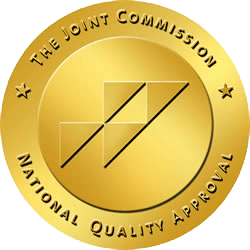Although the basic organization of the brain occurs when a baby is in the womb, the brain continues to refine its connections throughout childhood and adolescence. Some experiences, such as learning a new language, or playing a musical instrument, strengthen key connections in the brain. However, other choices, such as using drugs or alcohol, are harmful to brain health. Because the adolescent brain has not yet finished developing, using drugs during your teenage years may be particularly dangerous. For this reason, it’s crucial to know these substance abuse facts as they pertain to the teen brain. If you are struggling with substance abuse, it’s time to begin substance abuse treatment programs for help.
Substance Abuse Facts to Know About the Teen Brain
1. The prefrontal cortex does not complete development until you are in your 20s.
The teenage years are difficult in many ways — you may feel stuck between your parents’ views of you as a child and your desire to become more independent. The brain is at a transition point during these years, too. During early development, brain cells make trillions of connections. These connections, or synapses, are gradually pruned during childhood or adolescence. The prefrontal cortex, which regulates decision-making processes, is one of the last brain areas to develop. The brain does not complete this process until the early- to mid-20s, making adolescent brains highly vulnerable to drug use.
2. The adolescent brain is wired for risk-taking.
Adolescence is a time for trying new things and exploring the world. In fact, the brain is wired that way. The prefrontal regions that are last to develop regulate processes such as inhibition, delayed gratification, and abstract reasoning. Thus, you may be more likely to make impulsive, risky choices during your teen years.
3. Drinking and drug use changes in reward circuits that underlie lifelong problems with addiction.
When you drink or use drugs, the reward circuitry of the brain becomes active. This area is responsible for the pleasurable feelings associated with substance use, but it also underlies cravings and drug-seeking behaviors. Taking drugs as an adolescent makes long-lasting changes to this reward system, making it much more likely that you will struggle with addiction later in life.
4. Using drugs affects the white matter of the brain, which is important for efficient communication between brain regions.
The brain is divided into gray and white matter. Gray matter is where cell bodies live, while white matter consists of communication tracts between brain regions. Alcohol and drug use are particularly damaging to the white matter of the brain, meaning that the efficiency of information flow is compromised. In particular, substance use results in lower white matter volume and disorganization of white matter structure.
5. Drinking and drug use harm thinking abilities such as memory or logical reasoning.
Scientific research demonstrates that teen drinking and drug use during the critical years of brain development in adolescence results in significantly poorer thinking abilities. For example, teenage drinkers have poorer memory, lower attention, and slower information processing abilities. Marijuana use may also affect cognition, contributing to poorer working memory and cognitive flexibility.
6. Drug-related changes in brain structure may be permanent.
It is easy to say, “I’ll quit when I’m older,” but the brain is not so forgiving. Drug-related changes to the brain during the adolescent years may result in lifelong differences in brain health.
Teen Treatment Programs in California
Although more research is needed in this area, the brain may not easily “bounce back” from heavy drug or alcohol use during the vital teenage years of brain development. Thus, even recreational use of drugs may be permanently affecting your brain structure and cognitive abilities. This may impact school performance, getting a job, and lifetime risk of addiction. Don’t ignore these substance abuse facts regarding the teen brain. Contact Destinations for Teens today at 877.466.0620 to begin with our treatment programs.
Resources:
- Diamond, A. (2002). Normal development of prefrontal cortex from birth to young adulthood: cognitive functions, anatomy, and biochemistry. In Principles of Frontal Lobe Function, Stuss, D.T. & Knight, R.T. (Eds.), 466-503. New York, NY: Oxford University Press
- Squeglia, L.M., Jacobus, J., & Tapert, S.F. (2009). The influence of substance use on adolescent brain development. Clinical EEG and Neuroscience, 40(1): 31-38.


